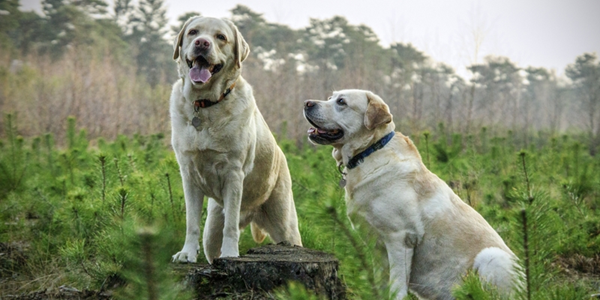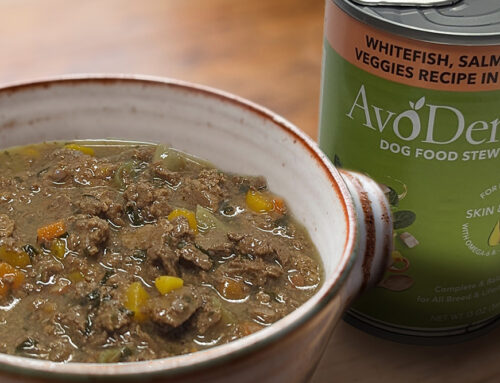As your dog grows older, there’s a good chance they’re garnering some extra lumps, bumps, and skin. Telling them all apart can be tricky, and knowing whether they’re harmful or not is even trickier. Here’s your guide to decoding certain bumps, lumps, and skin tags on your dog, and understanding what they could mean for your dog’s health.
Skin Tags on Dogs
Skin tags are the most common growths to appear on your dog. Skin tags are harmless and very common among dogs, so they aren’t anything to worry about. Below, find a few common ways to identify a skin tag:
- If what you find on your dog is a small growth, only a few millimeters at most, it’s likely that it’s a skin tag. However, some skin tags on dogs can grow to the size of a grape.
- You could mistake a skin tag because they resemble warts. Skin tags looks more tear-shaped rather than round.
- Skin tags can appear anywhere on your dog, but they are most common in areas where skin rubs against skin.
- A sure sign of skin tags is they tend to dangle as opposed to being a bump or lump.
- Skin tags are also the same color as your dogs skin, whereas most warts can be darker or lighter.
The definitive cause of skin tags is up for debate. Some believe that skin tags can come from different parasites, skin irritants, improper skin care, age, or even over cleaning your dog by stripping away oils from their skin. If you’re worried about your dog’s dry skin developing skin tags, you can try some coconut oil for your dog. Coconut oil helps with any dry or itching skin, especially for places where skin rubs together.
A balanced diet can also help to maintain a healthy skin and coat for your dog and avoid skin tags. Try AvoDerm® Natural Dog Food For Adults, packed with omega-rich avocado to help maintain healthy skin in your adult dog. With a variety of meat-based proteins, AvoDerm Natural® Dog Food For Adults supports healthy skin while also avoiding any food sensitivities that can lead to itchy and dry skin. With these high quality ingredients supporting your dog’s skin and coat health you can avoid the possibility of skin tags and other skin problems developing.
Other Bumps on Your Dog
Skin tags aren’t the only bumps that can appear on your dog. There are several other lumps and growths that can appear on your dog, especially if they’re overweight or a senior.
- Fatty tumors are completely harmless and quite common in overweight and elderly dogs. These bumps form underneath the skin’s surface. They can be known to cause irritation depending on where they develop. They can also grow in size and shape. If they grow too big they can get caught or irritated easier than other skin tags. A well balanced diet meal such as AvoDerm Natural® Weight Control Dog Food can help maintain a healthy weight in your aging pup.
- Mast cell tumors are another common bump found on dogs. These tumors can vary in appearance and can develop at any age. They can also be found on or underneath the skin as well as being small or large. These types of tumors can be harmful and hard to identify so it’s important to visit a vet at any sign of these types of bumps.
- Warts are very similar to skin tags and are also harmless. They generally have a thick base behind them as opposed to skin tags which dangle away from the skin. Warts are caused by a virus and will eventually go away on their own so there’s no immediate need to see a vet if you find a wart on your dog.
When to be concerned with skin tags on your dog:
When dealing with skin tags, look for these signs so you can take your pup to the vet immediately to have the bump properly assessed:
- Development around the mouth or lips
- Bleeding or discharge
- Pain or discomfort when touched
- Change in size, color, or shape
- Large tags that are being rubbed or appear sore
- Any itching or irritation
It’s important to not remove any skin tags yourself, as this can cause a lot of unnecessary stress and discomfort for your pet. If a skin tag is bothering your pup, you should take them to the vet and have the vet decide whether it should be removed or not.
When to Be Concerned With Bumps on Your Dog
When dealing with other bumps on your dog, such as fatty tumors, mast cell tumors, and warts, you should take your dog to the vet immediately if you notice any of the following signs:
- Sudden change in size, shape, color, or shape
- An increase in discomfort
- Any itching
- Thickening around base
- If the bump is a different texture than your dogs skin
- Bleeding
- Ulceration1
Identifying skin tags from other bumps can be difficult but this guide should help you better understand your dog and their different bumps. If you have any skepticism while identifying lumps or skin tags on your dog, it’s always important to get a vet’s official diagnosis to avoid any future problems.
SOURCES:
- Jackson, Rebecca. “Like It or Lump It: When to Worry about Lumps on Pets.” Pet Insurance from Petplan, 11 May 2017.





